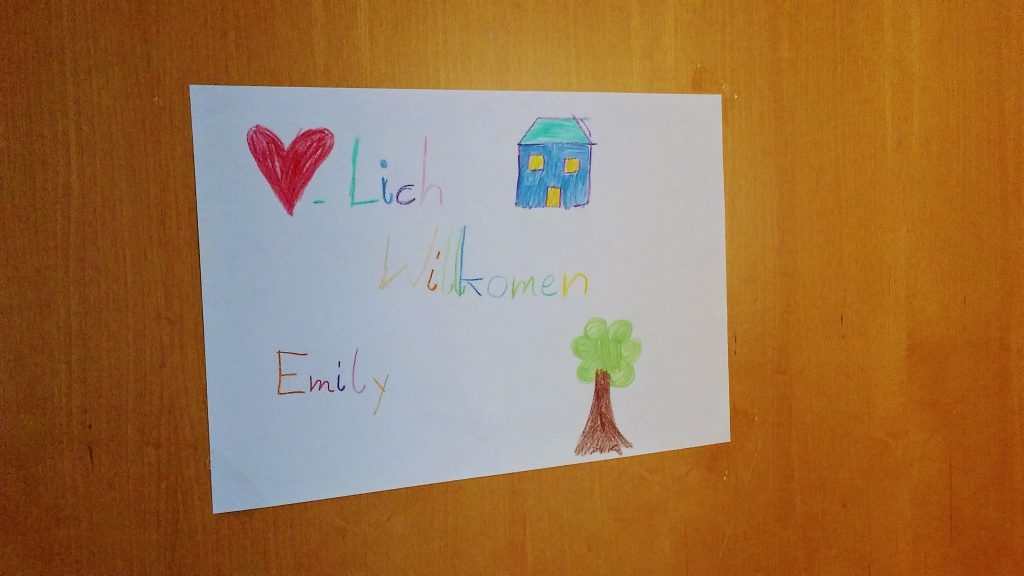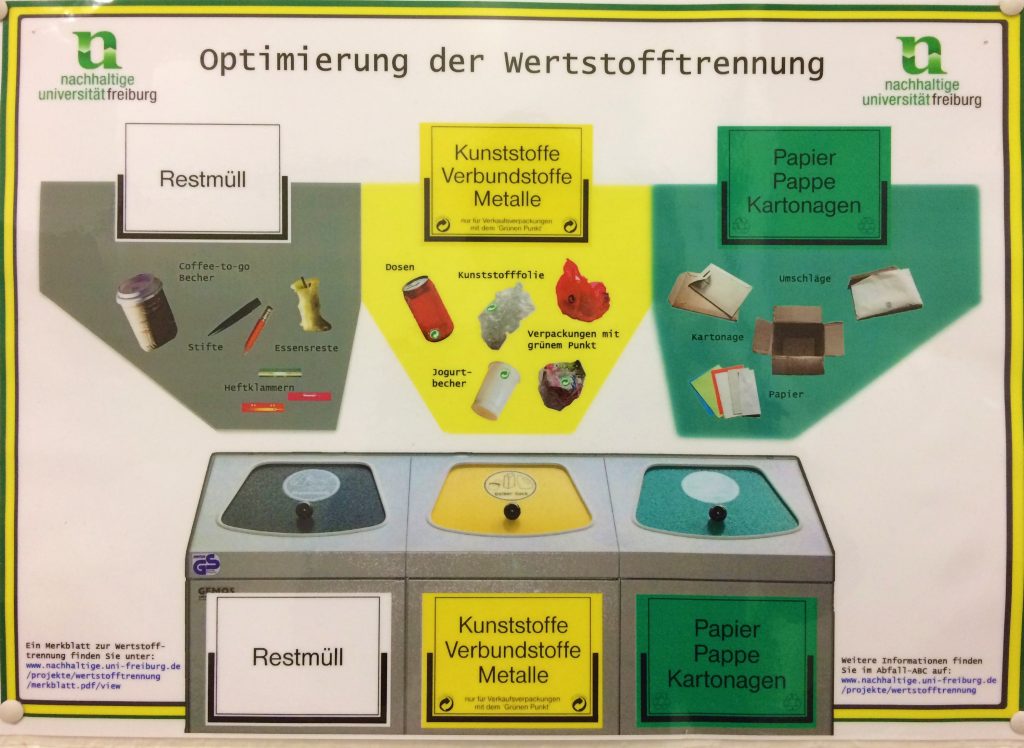Now that I’ve been here for a few weeks, I’m getting used to my day-to-day life in Germany. The culture doesn’t seem so foreign, but the differences are stark when it comes to the details.
I’m living in a newer section of the city with a family of a mother and two young children. The younger one is only 3 years old and doesn’t speak very clearly, so I can’t actually understand him most of the time. On the other hand, sometimes even his mother can’t understand him, so I don’t feel as bad.

I have my own bedroom, but I share the rest of the house (the bathrooms, kitchen, washing machine, and living room) with the family. Sometimes it can be hard to fit in among the activity in the morning, with all four of us getting ready at the same time!
To get into the apartment, I have to walk up four flights of exterior stairs- the front door is on the top floor! There’s a small antechamber where we leave our shoes and coats, because no one in Germany wears street shoes in the house. Instead, they favor Hausschuhe (slippers).
When you come further into the house, there’s the kitchen and living room. The kitchen is fairly small, but luckily the family has a dish washer! They do not, however, have a microwave. All leftovers have to be heated using the stove or oven. On the counter, there’s a coffee machine, an electric kettle, and a soda machine. Germans love coffee and tea, and they almost always drink carbonated water instead of plain tap water. My host family keeps a constant supply of home-made Tafelwasser on hand using their soda machine. Personally, I still prefer plain old tap water, and German tap water is perfectly clean and safe to drink.
The kitchen is the only place with trash cans in the house, so I have to bring all of my trash upstairs. Germans have a serious recycling program, and every building and house has three different trash cans in it. At first, I’d have to stop and carefully consider before I could throw anything away! It’s much different from America, were we more or less just absentmindedly toss things in the single trash can.

In the living room, there’s a “trapeze bar” swing suspended from a beam in the ceiling. The children love to play on it, especially the 7 year old girl. German children have gymnastics classes in kindergarten, so she’s really quite aerobatic sometimes! This is the second indoor swing I’ve seen in Germany, so I’m beginning to suspect that it’s more common here, perhaps because German architectural tastes leave thick wooden accent beams exposed.
Down the spiral staircase (common in Germany) are the bedrooms. The children share a room, and I have my own fairly spacious room.
The bed is a typical German bed. By that, I mean that the queen-sized bed is achieved by pushing two twin mattresses together and covering them with one fitted sheet. There’s no top sheet, but rather only the square duvet that you can see in the photo. My pillow is also actually a large square, that I have to fold in half to get something approximately the size and thickness of an American pillow.
Both of the floors of the house have a balcony, and I can access the lower one from my room.

One odd thing about Germans is that they don’t like curtains (except for the lacy little half-window curtains, and those are only in older homes). If I want privacy, I have to shut the roll-down, exterior shutter, but unfortunately that blocks my view and most natural light.
Speaking of my door (which is also my window), every day we open the windows for about 5 minutes to “air out” the house. German houses are quite airtight and have no vents, so they can get quite stuffy. Worse yet, they get damp. In the photo below, you can see the condensation that builds on the windows every morning- if we don’t air out the house, black mold can start growing (and does grow a little on the windows, where the water collects). I’ll admit that I’m a bit puzzled why they don’t invest in dehumidifiers, since the damp is such a problem.
I mentioned that German houses have no vents or central heating/cooling systems. Instead of air conditioning, Germans open windows. Anyone who’s living in the dorms at Hope can relate to this kind of life, except that Germans don’t use window screens! Usually this is ok, but occasionally moths, flies, and other insects invade the house. And instead of a furnace, every room has an adjustable radiator.
Just about every German building, no matter how new, uses radiators instead of furnaces. I believe it’s this system that allows for another German peculiarity: heated bathroom floors! While not ubiquitous by any means, I’ve experienced enough heated bathroom floors here to believe that it’s fairly common. The bathroom is always quite warm, but is fantastic if you’re bathing, but can be a bit oppressive if you’re simply brushing your teeth or doing your makeup.
While on the topic of the German bathroom, there’s a lot of little differences. The toilets here have no toilet tank and sport two flush buttons instead of a lever. The buttons save water by allow you to choose a larger or a smaller flush, depending on what you’re flushing. I’m still a little hazy about which buttons do which, but I have a 50/50 chance of guessing the correct one, so so far I haven’t asked anyone to explain.
The bath and shower also both have a hand-held nozzle, instead of just a fixed faucet. This is quite common in Germany, and personally I like the ability to hold the shower nozzle. I believe the nozzle for the tub is so that you can rinse yourself off after bathing.
Doing laundry is also a little different from back home- there’s no dryers in Germany! Instead, there’s drying racks for clothes. Without a dryer, clothes turn out wrinkly and stiff, so ironing is more necessary than in America. It does save energy, though, and Germans are quite environmentally conscious.

